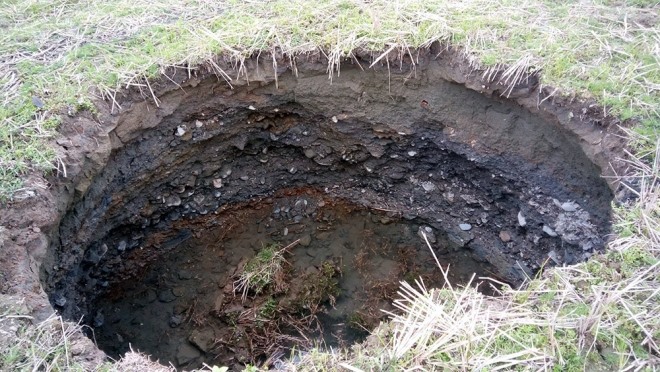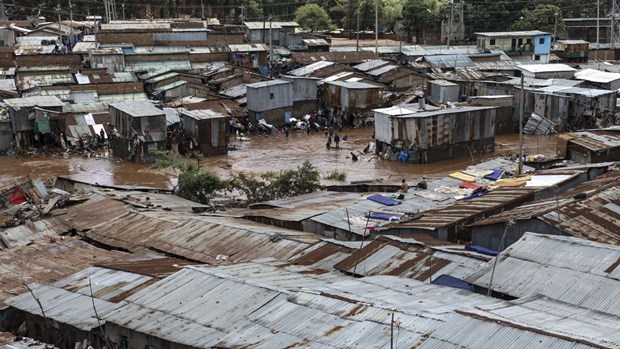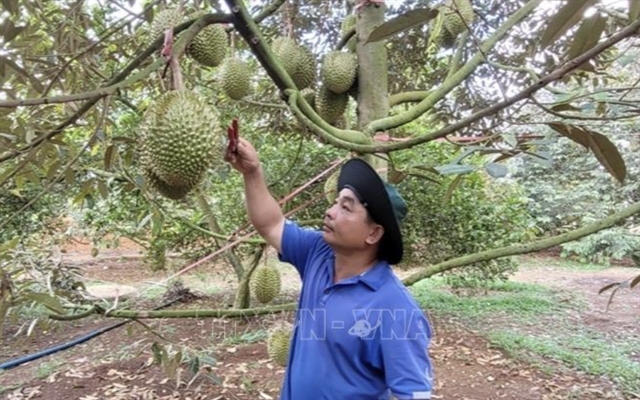 Environment
Environment

Sink holes have been appearing over the past month in the Chợ Đồn District of the northern mountain province of Bắc Kạn, generating anxiety among local residents.
 |
| Sink holes have been appearing over the past month in the Chợ Đồn District of the northern mountain province of Bắc Kạn, generating anxiety among local residents. — Photo vnexpress.net |
BẮC KẠN – Sink holes have been appearing over the past month in the Chợ Đồn District of the northern mountain province of Bắc Kạn, generating anxiety among local residents.
According to a preliminary survey by the district’s People’s Committee, more than 20 holes were found in the district, with each measuring 2-5 metres in width and 2-3 metres in depth.
Bản Tàn hamlet in Bằng Lũng town has suffered the most. It has recorded more than 10 land subsidence spots. Some of the sinkholes appeared in springs, diverting all their water under ground. Over the past 10 days, some springs in the district have dried up, leading to water shortage for daily activities as well as irrigation.
Cracks have also appeared, with some measuring hundreds of metres in length.
Hoàng Văn Triệu, a farmer in Bản Tàn hamlet, said he was very anxious because big holes appeared in his fishing ponds while cracks were recorded in his garden, fields and the foundation of his house.
He said the fishpond was still full of water on Tuesday, with around 200kg of fish. However, the following day, a big hole appeared in the middle of the pond and all the water and fish were gone.
Land subsidence was also recorded in Bằng Lãng and Ngọc Phái communes. In the latest case, three sink holes appeared in a field in Ngọc Phái commune, measuring five metres in width and 3-6 metres in depth.
According to local authorities, this is not the first such occurence in these areas. However, this time the incidents have been more numerous and serious.
Deputy Director of the provincial Department of Natural Resources and Environment, Trần Nguyên, said a study showed that one of the reasons for the land subsidence was ground water pumping and the karst topography, which is common throughout northern and central Việt Nam.
According to scientists, underground caverns usually develop in karst terrain. External disruptions, such as well drilling, excavation and foundation construction can cause the caverns to collapse.
The provincial People’s Committee is working with relevant agencies on measures to address the problem. — VNS









